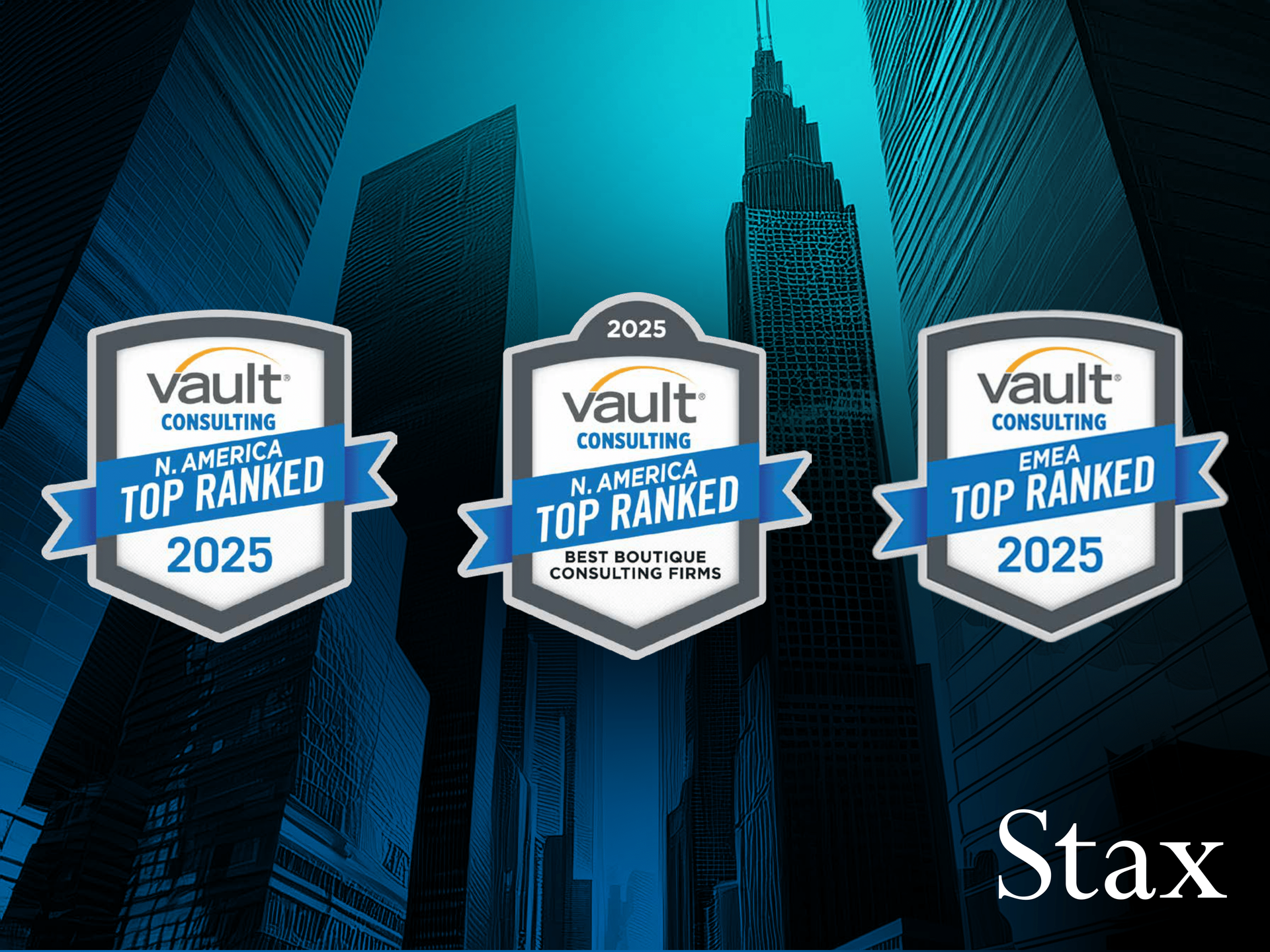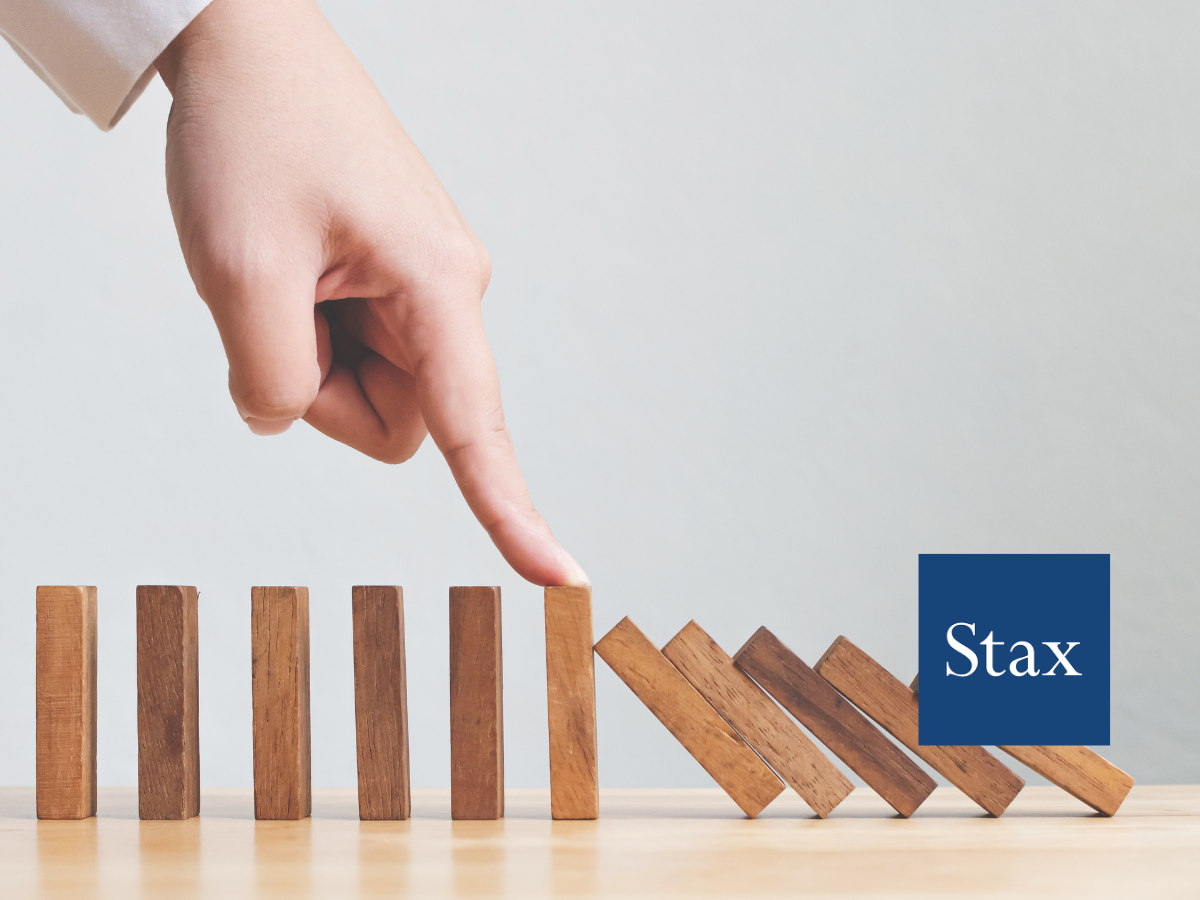Featured in Business.com: Asset Management for Your Construction Firm — 8 Tips for Success
Featured in Business.com: Asset Management for Your Construction Firm — 8 Tips for Success
This article was written by Mark Fairlie for Business.com
Most construction firms have multiple ongoing projects simultaneously, each with its own assets, such as machinery and equipment and cash flow. This complexity can make overall management challenging if the right systems, tools and processes are not in place.
We’ll explore eight crucial tips for asset management that every construction firm can use and share eight asset management mistakes to avoid at all costs.
What is asset management in construction?
Construction asset management is how businesses manage and maintain the tools, machines and equipment they need to complete building projects. Like traditional assets in business and accounting, construction assets require oversight and maintenance to minimize costs and maximize efficiency.
The five key elements of construction asset management are as follows:
- Buying assets: Construction firms must do their due diligence to ensure that they purchase the right tools and equipment for their projects. Factors influencing buying decisions include cost, usage range and longevity.
- Tracking assets: Construction firms use tracking technologies like GPS or radio-frequency identification (RFID) to safeguard their investment in vehicles, machinery and other assets. Tracking tools help prevent theft and allow construction businesses to monitor the location, condition and usage of each asset they own in real time.
- Preventive maintenance: Construction firms regularly check the status of each asset to schedule preventive maintenance. This oversight often prevents minor problems from turning into more serious issues, reducing the number of unexpected breakdowns that could affect a job’s progress.
- Asset utilization: Companies must ensure that they deploy their assets efficiently across job sites to maximize their return on investment. Effective asset utilization also helps optimize productivity and minimize idle time.
- Disposing of or replacing assets: Even if an asset is in good working condition, it may be cost-effective to dispose of it when the cost of maintaining and repairing it exceeds its value. Replacing an asset is also a reasonable option when a newer asset has better features, is cheaper to run and will improve productivity.
Kelsey Chisholm, director of global business consultancy Stax, stresses that construction asset management solutions are crucial for equipment tracking and driving overall business success. “Controlling costs and maximizing operational efficiencies are critical to maintaining a competitive edge for construction firms,” Chisholm explained. “With multiple projects running simultaneously, efficient asset management systems help firms optimize utilization, prevent downtime and enhance productivity.”
Done well — and with the right tech tools — construction asset management helps firms control costs, better allocate resources, ensure they have the equipment they need and reduce downtime. “Companies that embrace advanced software solutions for monitoring and maintaining assets are improving decision-making and setting themselves up for long-term growth and sustainability,” Chisholm added.
Broad Trends
There has been an emergence of new cybersecurity threats in both number and severity—the average number of attacks across attack types (e.g., ransomware) over the last two years has increased significantly across verticals. This surge can be attributed to an increase in human endpoints, the expansion of remote work, increased reliance on cloud services, and the adoption of sophisticated tools by cybercriminals. In addition, ransomware attacks have skyrocketed over the past five years, with a 2023 whitepaper claiming that reported events have grown at a CAGR of 71%.
These challenges will only persist, resulting in an increased emphasis on investment within the managed detection and response (MDR) market to address and mitigate cyber threats. In addition, customer and regulatory requirements on security continue to tighten. At the same time, maintaining in-house talents becomes increasingly challenging, resulting in an increased need to leverage outsourced services.
Connection to Managed Detection & Response (MDR)
Historically, endpoints (PCs, mobile phones, etc.) are the most fragile point of an organization’s security system. To address these weaknesses, companies have invested in specific tools such as EDR (Endpoint Detection and Response) and SIEM (Security Information & Event Management) to proactively identify and detect threats.
- EDR solutions are designed to detect and correlate advanced endpoint threats and continuously monitor endpoints to detect malicious behavior.
- SIEM tools gather data from multiple sources (across endpoints, network, etc.), analyze the large volume of log data collected, and correlate alerts to isolate true risks from false positives.
EDR and SIEM can also complement each other—many companies adopt a layered approach where log information from EDR tools is fed into SIEM tools, allowing the SIEM to analyze security alerts across an entire organization.
MDR extends the capabilities of EDR and SIEM by maximizing the utility of these tools in maintaining an organization’s security posture, a task that is difficult and costly for organizations to do in-house.
MDR provides a 24/7/365 service run by security experts who monitor an organization’s endpoints, networks, and cloud environments and respond to security threats. Additionally, MDR goes deeper than other cybersecurity technology solutions by augmenting technology with advanced human expertise.
MDR is a massive, high-growth market as cybersecurity transitions from pure tech solutions to proactive risk management. The opportunity size is massive and underpenetrated, with the demand for MDR growing due in part to a number of drivers:
Asset management tips for construction businesses
Asset management is crucial for growing your construction firm. Here’s what you need to know about managing assets for your construction business.
1. Get executives and senior management on the same page.
Communication is critical in the construction industry. A cross-functional organizational framework is one of the easiest ways to ensure effective communication. This structure is counterintuitive to traditional hierarchies but can help solidify workplace collaboration and performance.
Construction company leadership must have high-value, meaningful information to make decisions. Clear, accurate communication is vital when dealing with employees, clients and third-party vendors as well as when handling mission-critical tasks like budget planning, reporting, accounts payable and accounts receivable and income forecasting.
2. Choose the right construction asset management software.
Construction-specific computerized maintenance management software (CMMS) is invaluable for streamlining operations and maximizing your assets. The right CMMS will help you monitor every asset’s location and condition, schedule routine maintenance and run detailed reports to improve decision-making about disposing of or replacing assets.
Look for the following CMMS features before signing up for a platform:
- Interoperability: Your CMMS should work with any type of tracking device you currently use.
- Asset-tracking: Your platform must be able to track every type of asset you own or lease, such as vehicles, equipment, tools or technology.
- Alerts: Look for a solution with automated alerts to warn you of equipment malfunctions and other critical issues.
- Audit logs: Invest in a CMMS that manages audit logs, allowing you to track changes to an asset’s status or usage.
- Integrations: Your CMMS should be able to connect to your other business software via plug-ins, an application programming interface or webhooks.
- Error reporting: The best construction asset management software will include catch-and-correct error reporting. This feature identifies and resolves potential data issues before the data you rely on becomes so inaccurate that it undermines your asset management program’s success.
- Maintenance scheduling: Select a CMMS that can automate maintenance scheduling and tracking, helping you reduce repair costs.
- Data-driven insights: Choose a package that provides data-driven insights to help guide decisions on compliance and safety issues.
3. Create and maintain a comprehensive asset register.
A detailed, current register of your firm’s assets is crucial for effective management. Joshua Riutta, the owner of Mikku and Sons Roofing, stresses that this register must go beyond a simple inventory. “[It should] document every asset with details such as purchase date, cost, location, how long you expect it to last, its specification and maintenance history,” Riutta advised.
Austin Skoog, owner of siding contractor Sky Side Exteriors, further emphasizes the importance of knowing your assets. “[Construction firms] need to know what they own,” Skoog cautioned. “Whether it’s big equipment or small tools, having a master list is crucial.”
Your CMMS should help you create and maintain a comprehensive asset register. Use it to log new assets and regularly update the status of all current assets, including their repair and maintenance activities.
An updated register can help a construction business owner with the following issues:
- Financial planning and budgeting
- Compliance and auditing
- Maintenance planning
- Identifying underutilized assets
4. Invest in hardware for accurate asset tracking and management.
The right hardware is critical to effective asset management. You must ensure your equipment is compatible with your current or future CMMS.
Consider the following hardware to assist with accurate asset tracking and management:
- Handheld scanners and RFID tags: Handheld scanners and RFID tags can help you identify and correct inaccuracies quickly.
- GPS tracking devices: GPS tracking devices are invaluable for real-time tracking, particularly for large machinery and vehicles.
- Internet of Things (IoT) sensors: IoT sensors collect real-time data on equipment usage, performance, condition, vibration temperature and more.
Check with hardware manufacturers or vendors to ensure their devices and tools can track the specific data you need and have refresh rates fast enough to support real-time monitoring.
Skoog noted that equipment labeling, including sensors and tags, is essential for theft prevention and lost assets. “Labeling and tagging your equipment, whether with simple labels or more advanced tracking methods like RFID tags or GPS, helps you keep tabs on where everything is,” Skoog said. “Tools and equipment move between sites and teams and without tracking, things can easily go missing.”
5. Prioritize asset security.
In construction, theft and unauthorized equipment usage contribute to significant financial losses and major project delays. Establishing robust security measures is critical for protecting your valuable tools and equipment. Consider the following tips:
- Access control parameters: Set strict rules about who can enter your construction sites and storage areas. Consider installing a door entry system that requires authorized personnel to use keycards or biometrics authentication. Another option is posting security guards to monitor the worksite.
- Geofencing: Consider setting up geofences that alert you when equipment or a vehicle leaves its designated areas without permission. Thanks to your CMMS and the GPS modules and RFID tags that send data to it, this should be possible.
- Auditing: You can also spot and stop theft by running regular inventory audits with occasional surprise inspections to ensure everything is where it should be.
6. Review your assets quarterly.
Periodic reviews are essential to any enterprise’s successful operation, but they are particularly important for construction asset management. Experts advise conducting these analyses quarterly. You’ll identify and fix problems during these reviews and discover opportunities for improvement.
For example, a significant concern for construction managers is how long assets will last. In your quarterly reviews, you can compare how well assets perform onsite against manufacturers’ suggested performance and equipment lifespans.
Your construction asset management system must be able to capture the appropriate information throughout various product lifecycle stages to conduct effective asset reviews.
7. Take active control of asset maintenance.
Asset maintenance is critical to improving the reliability and longevity of your tools, machinery, equipment and vehicles. For best results, implement the following measures:
- Preventive maintenance: Preventive maintenance involves inspecting and servicing your equipment regularly. Your maintenance schedule could be based on time intervals (like quarterly) or usage. Preventive maintenance lets you catch problems earlier, avoid unexpected breakdowns and utilize your assets longer.
- Predictive maintenance: Predictive maintenance uses sensors, like IoT devices, to monitor the condition of your equipment in real time. This allows you to anticipate repairs and prevent minor issues from escalating.
- Proactive maintenance: Proactive maintenance uses real-time data to spot patterns that warn of a future issue, such as abnormal equipment wear, unexpected temperature spikes or unusual vibration levels. Identifying these early warning signs can help you prevent costly failures and downtime. Proactive maintenance also helps you decide when to replace, upgrade or repair equipment.
Riutta emphasizes that a strategy is needed when it’s time to replace older assets. “This could include selling, recycling or donating equipment,” Riutta suggested. “Proper disposal helps free up space and can sometimes even bring in additional revenue.”
8. Hire a construction financial or accounting professional.
A trained and qualified financial team is crucial to ensure your construction company’s solvency and success. Ensure you hire a certified public accountant (CPA) or another financial professional with specific construction expertise.
Qualified financial professionals will help you create long-term value that far outweighs the potential dangers of mismanaging assets. Financial analysts are passionate about numbers and can help you monitor and manage equipment in an organized and systematic manner using the best accounting and invoice-generating software.
Construction financial professionals have skills in financial services, valuation, financial modeling and other critical talents. They analyze data for trends to help managers make informed decisions, help executives monitor and balance project budgets and make recommendations regarding future spending.
Asset management mistakes to avoid
Avoid the following mistakes to ensure your construction business remains profitable and in good standing:
- Not reading the construction contract: When you don’t read the contract, you may miss critical details that could cost you money. The contract outlines terms and conditions and is worth thousands, if not millions, of dollars. Read the fine print to fully understand where you might be on the hook for something you otherwise wouldn’t worry about.
- Failing to use estimating software: If you aren’t using one of the best construction estimating tools, you may be underbidding or overbidding projects, costing you dearly in terms of money and client satisfaction. Estimating software should be part of your standard professional profile to determine project costs precisely while factoring in overhead costs and profit.
- Allowing haphazard supply chain deliveries: You need materials and supplies to build projects. But you don’t need them all at once, nor do you want to wait for items when you’re ready to complete a portion of the project. Organize your supply deliveries so materials and supplies arrive when needed.
- Neglecting to train employees properly: If you don’t invest in employee training on proper asset usage, you risk health and safety issues and cause unnecessary wear and tear on the asset.
- Overlooking small tools and consumables: Many companies understandably focus on protecting their large and expensive assets. However, you risk significant project delays if smaller tools and consumable materials go missing.
- Failing to consider total lifecycle costs: While the temptation to purchase on price alone is strong, this may end up costing your company more in maintenance, repairs, day-to-day operation and disposal. The total cost of ownership on higher-ticket assets may be lower than on alternatives that are less expensive at the outset.
- Ignoring asset utilization rates: Some jobs may require specialist equipment. However, if those jobs are only a small portion of your business, renting the asset may make more sense than purchasing it. Regular utilization is crucial when buying equipment, tools and machinery because underused assets tie up capital that could be better used elsewhere.
Asset management and your construction firm’s success
Asset management is essential for construction companies. Monitoring and tracking equipment allocation is complex, but knowing the best way to manage assets — both small and large — is essential for keeping enterprises and projects running smoothly.
While asset management and equipment monitoring solutions reduce costs, other considerations include cash flow reconciliation, maintenance, liability and logistics. For example, in-depth product analyses can help you decide whether to rent or purchase the necessary equipment.
With careful consideration, savvy managers can leverage the latest technologies to execute successful projects and ensure long-term enterprise sustainability as they build their construction businesses.
Ryan Ayers contributed to this article.
Read More
All Rights Reserved | Stax LLC | Powered by Flypaper | Privacy Policy









